The Trevi Fountain is one of the most famous tourist attractions in Rome. Located in the capital city of Italy, Rome, this fountain is one of the most beautiful examples of Baroque architecture. Designed by Nicola Salvi in the 18th century, the Trevi Fountain is an impressive structure with a height of 26 meters and a width of 20 meters. In the center of the fountain, there is a statue of the sea god Neptune, while on the sides, there are statues of Health on the right and Abundance on the left. The Trevi Fountain is one of the most visited places by tourists and is an important structure that reflects the historical texture of Rome.
The History and Importance of the Trevi Fountain
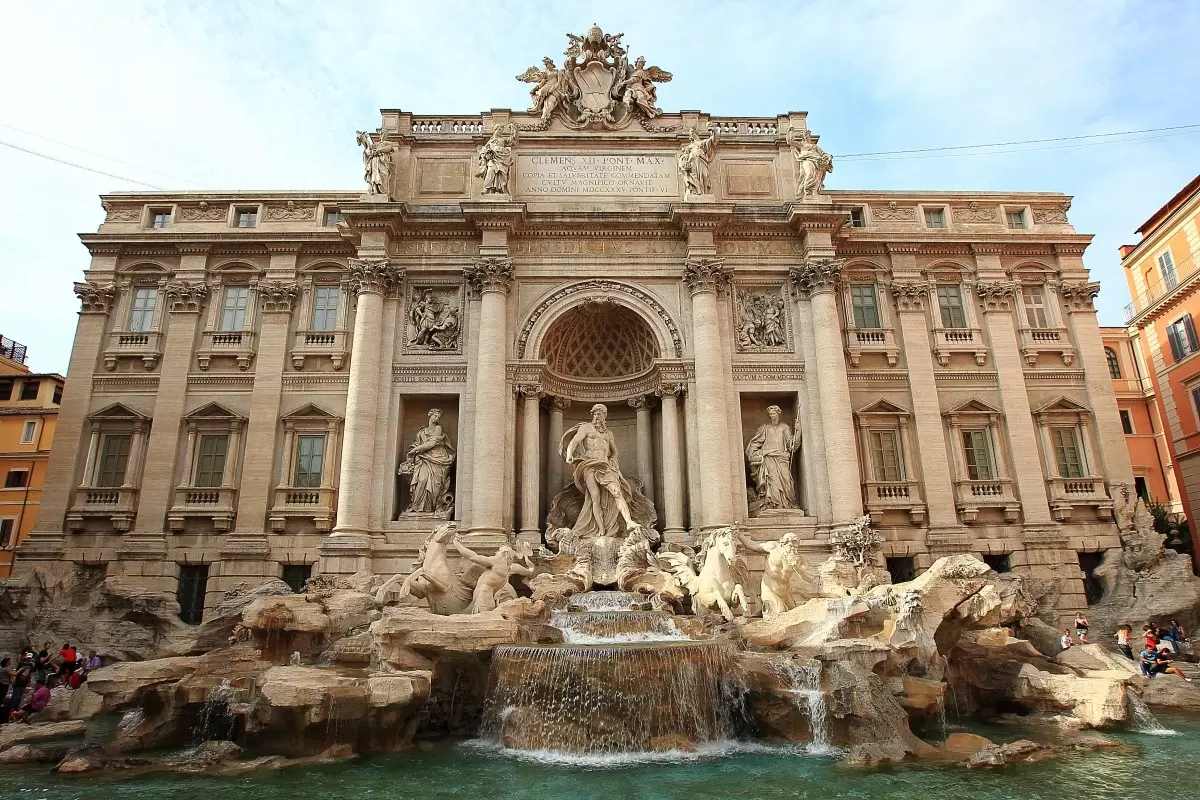
The Trevi Fountain is a structure located in the capital of Italy, Rome, and is considered one of the most famous fountains in the world. Designed by Nicola Salvi in the 18th century, the Trevi Fountain is one of the most beautiful examples of Baroque architecture and was completed in 1762.
The fountain is fed by the Aqua Virgo water channel, one of Rome's oldest water sources. The design of the fountain includes a statue of the sea god Neptune and two triton figures. At the top of the fountain, on the right and left sides, are the statues of the goddesses of health and abundance, Salus and Abundantia.
The history of the Trevi Fountain dates back to the Roman Empire. During ancient Rome, the Aqua Virgo water channel supplied water to many buildings in the center of Rome. However, during the Middle Ages, the water channel was destroyed and became unusable. In the 18th century, Pope Clement XII decided to rebuild the water channel and the Trevi Fountain was built on top of it.
The Trevi Fountain is one of Rome's most important tourist attractions and is visited by millions of tourists every year. Its importance is not limited to its architectural beauty. The fountain has also been the subject of many legends and traditions. For example, throwing a coin into the fountain's water is a tradition to make a wish to return to Rome.
The Trevi Fountain is an important part of Rome's historical and cultural heritage. It reflects the importance of Rome's water sources and the architectural richness of the Roman Empire. Additionally, the fountain's beauty and legends increase Rome's tourism potential. The Trevi Fountain has become a globally recognized symbol and is one of Rome's most important landmarks.
Places to Visit in Rome: Trevi Fountain
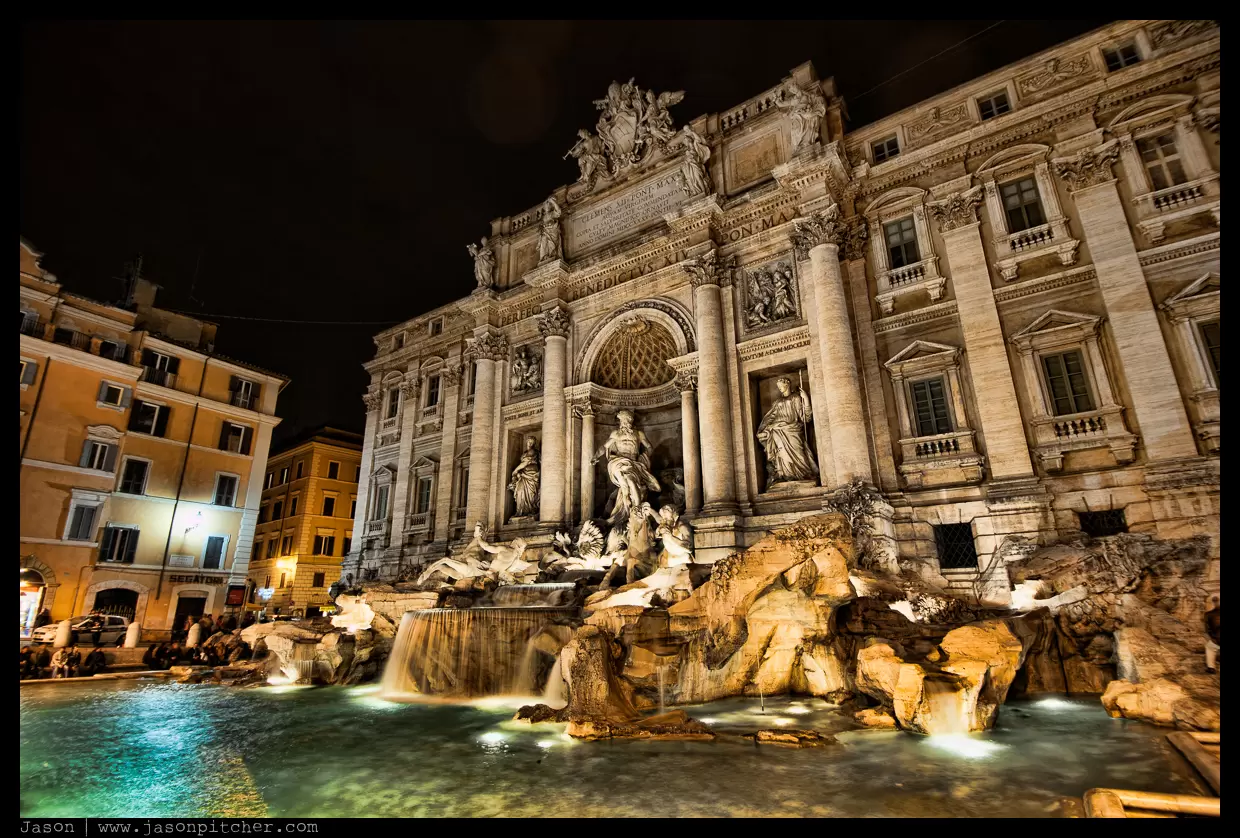
Rome is the capital of Italy and one of the richest cities in terms of history. There are many places to visit in Rome, but the Trevi Fountain is one of the most famous tourist attractions. The Trevi Fountain is located in the center of Rome and is one of the most beautiful examples of Baroque architecture.
The Trevi Fountain was designed by Nicola Salvi in the 18th century. The fountain is decorated with a depiction of the sea god Neptune being pulled by sea horses in a carriage. On the top of the fountain, on the right and left sides, goddesses of health and abundance are depicted. Under the fountain, there is a depiction of Neptune controlling the water.
The Trevi Fountain is one of the largest fountains in Rome and is visited by millions of tourists every year. In front of the fountain, there is a tradition for tourists to make a wish by throwing a coin. Tourists who come to Rome hold a coin in their right hand and throw it over their left shoulder into the fountain. According to tradition, the wish comes true after the coin is thrown.
The Trevi Fountain is an important part of Rome's historical and cultural heritage. The fountain is one of the most beautiful examples of Rome's Baroque architecture and is a must-visit for tourists. Tourists who come to Rome can discover the city's historical and cultural heritage by visiting the Trevi Fountain.
Architectural Features of the Trevi Fountain
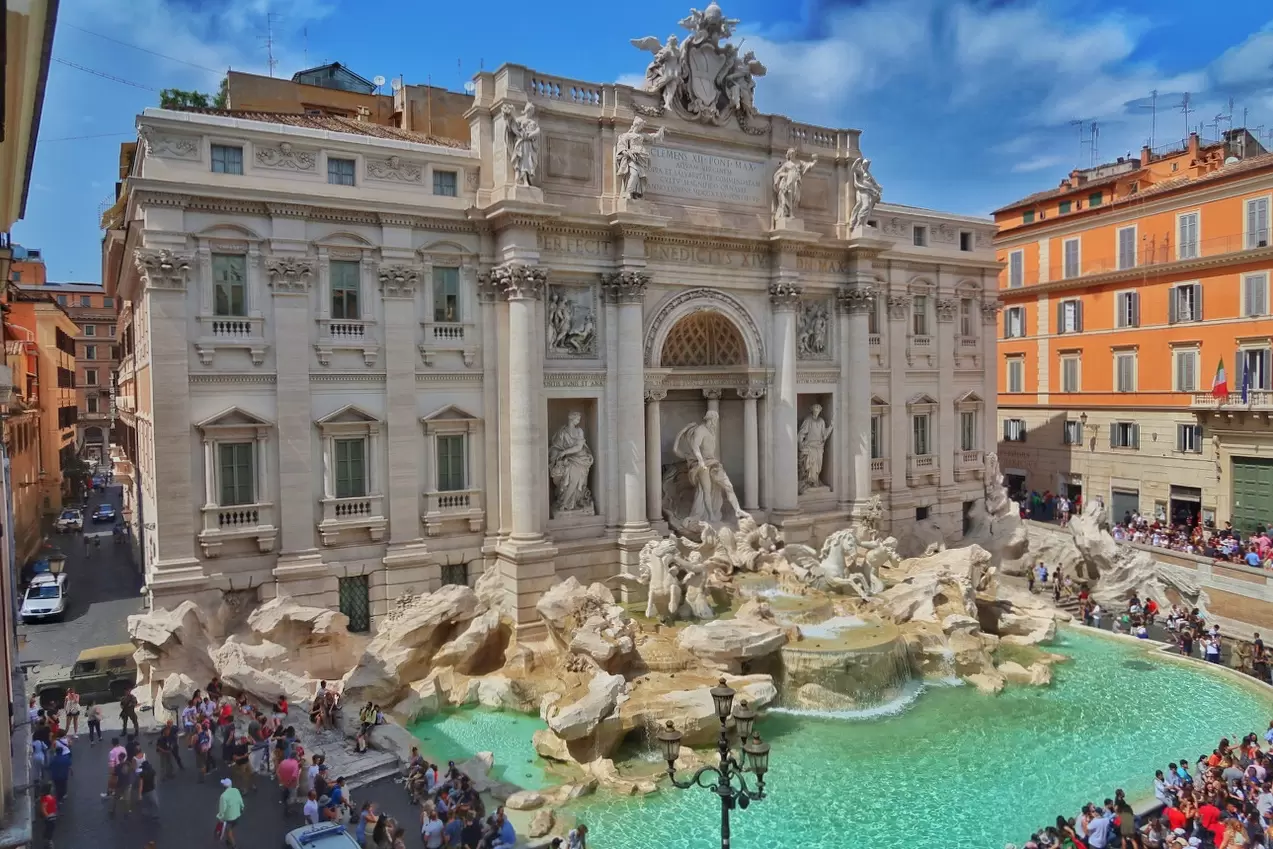
The Trevi Fountain is a structure located in the capital of Italy, Rome, and is considered one of the most famous fountains in the world. It is one of the most important examples of Baroque architecture, designed by Nicola Salvi in the 18th century and completed in 1762.
The Trevi Fountain is fed by the Aqua Virgo water channel, one of Rome's oldest water sources. The main part of the fountain is a statue group depicting the sea god Neptune sitting in a chariot. There are two sea horses on either side of Neptune. Behind the statue group, on a large rock block, there are several small statues and the point where the water comes out.
The architectural features of the Trevi Fountain reflect the most distinctive features of the Baroque style. The main part of the fountain is located in the middle of a pool surrounded by a high staircase. The pool is decorated with reliefs that played an important role in the fountain's design. The top of the fountain is completed with a statue group located in a niche surrounded by a high arch.
The architectural features of the Trevi Fountain are followed with great interest not only in Italy but also worldwide. The fountain is one of the most visited places by tourists and is considered one of the most important symbols of Rome. The Trevi Fountain is considered a great architectural success and is evaluated as one of the most important examples of the Baroque style.
Legends and Stories of the Trevi Fountain
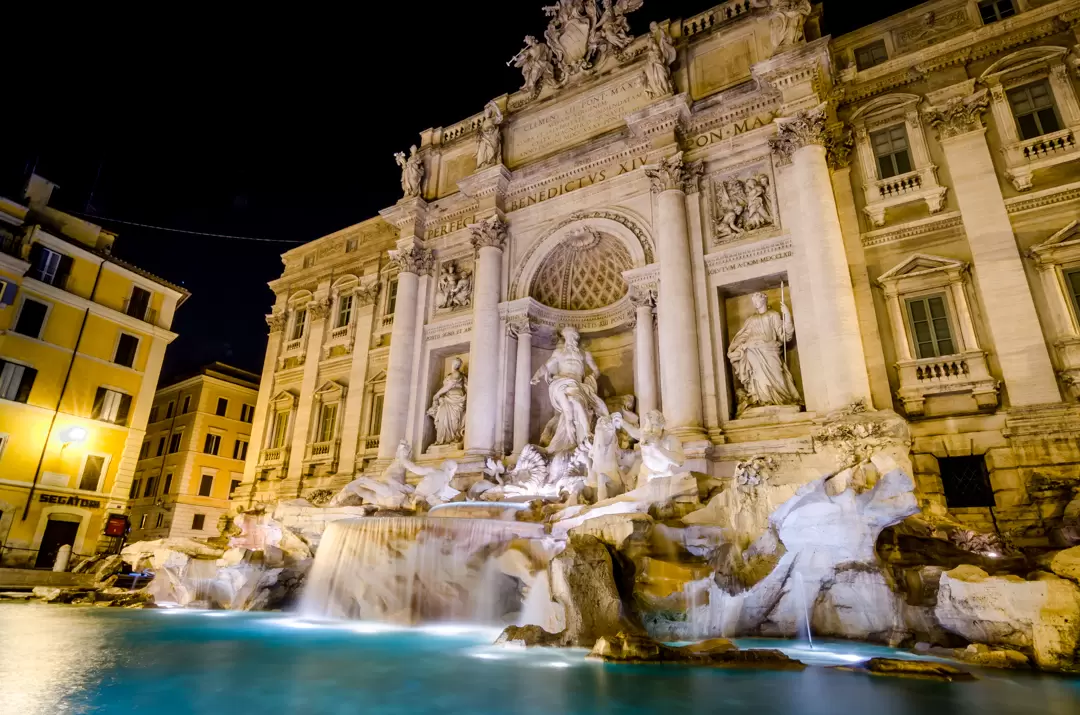
The Trevi Fountain is one of the most famous tourist attractions in Rome. Located in the capital city of Italy, Rome, this fountain is one of the most beautiful examples of Baroque architecture. The Trevi Fountain was designed by Nicola Salvi in the 18th century and completed in 1762. The fountain is fed by the Aqua Virgo water channel, one of Rome's largest water sources.
The Trevi Fountain is famous not only for its architecture but also for its legends and stories. The most famous legend of the fountain is that a person throws a coin into the water and makes a wish. According to the legend, the wish will come true, and the person will return to Rome one day. This legend causes millions of tourists to throw coins into the fountain's water every year.
Another legend of the Trevi Fountain is that the stones used in the fountain's construction are remnants of a temple used during the Roman Empire. This temple was dedicated to the sea god Oceanus, and there is an Oceanus statue in the center of the fountain.
The most famous story of the Trevi Fountain is the scene in Federico Fellini's 1960 film "La Dolce Vita." In the film, Anita Ekberg enters the fountain's water and swims with Marcello Mastroianni. This scene made the Trevi Fountain famous worldwide.
The Trevi Fountain is an important part of Rome's historical and cultural heritage. Along with its legends and stories, it attracts visitors' attention. It is recommended that everyone who visits Rome should see the Trevi Fountain and make a wish.
The Touristic Popularity and Visitor Experience of the Trevi Fountain
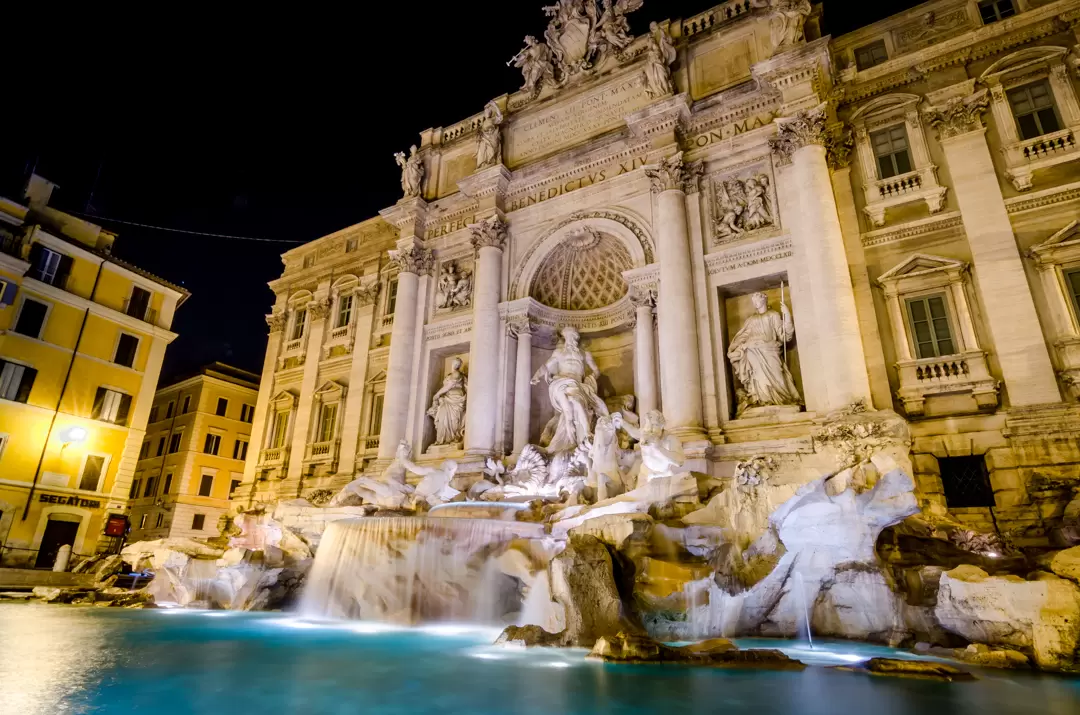
The Trevi Fountain is one of the most famous tourist attractions in Rome, the capital of Italy. Located in the heart of Rome, this fountain is one of the most beautiful examples of Baroque architecture and is visited by millions of tourists every year.
The tourist popularity of the Trevi Fountain can be understood when combined with the historical and cultural richness of Rome. The fountain was built in the 18th century and is one of the largest fountains in Rome. The white marble used in the construction of the fountain enhances its beauty. In addition, the water of the fountain comes from one of Rome's cleanest water sources.
The tourist popularity of the Trevi Fountain has also increased due to its frequent use in films and television programs. In particular, the famous scene in Federico Fellini's "La Dolce Vita" film has increased the popularity of the fountain.
However, the tourist popularity of the Trevi Fountain can create some problems in terms of visitor experience. The fountain is visited by thousands of tourists every day, which can make it crowded. Therefore, it may be difficult for visitors to fully see and experience the beauty of the fountain.
In addition, street vendors and tourist traps around the fountain can also negatively affect visitors' experiences. Therefore, it is important for visitors to be prepared and avoid tourist traps before visiting the fountain.
In conclusion, the tourist popularity of the Trevi Fountain can be understood when combined with the historical and cultural richness of Rome. However, it is important for visitors to avoid tourist traps and crowds at the fountain. This way, visitors can fully experience the beauty of the fountain.

Comments